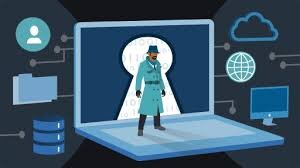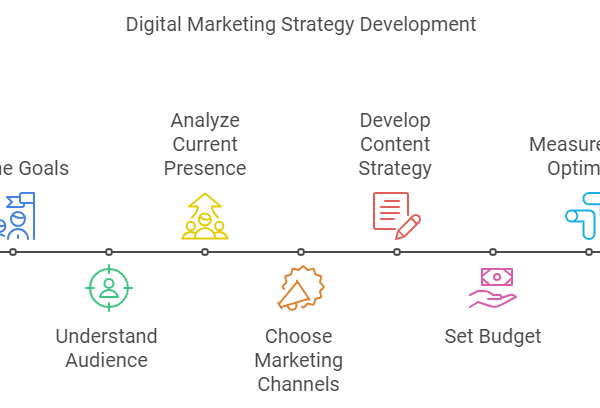
In today’s cybersecurity landscape, where threats are evolving rapidly, staying ahead of potential vulnerabilities is crucial. One effective way to ensure that cybersecurity professionals are well-prepared is through penetration testing training. Traditionally, penetration testing courses have been offered in-person, allowing for hands-on experience and face-to-face interaction. However, with advancements in technology and the rise of remote learning, online penetration testing courses have become increasingly popular. This article delves into the effectiveness of online penetration testing courses compared to in-person training, providing insights tailored to the Australian audience.
The Rise of Penetration Testing Training
Understanding Penetration Testing
Penetration testing, also known as ethical hacking, involves simulating cyber attacks on a system to identify and address security vulnerabilities before malicious hackers can exploit them. It’s a critical component of any robust cybersecurity strategy. The effectiveness of penetration testing largely depends on the skills and knowledge of the individual performing the test, making high-quality training essential.
The Evolution of Training Methods
Penetration testing training has evolved from traditional classroom-based sessions to include a variety of online options. This evolution reflects broader trends in education and training, driven by technological advancements and changing preferences in learning styles. Online courses offer flexibility and accessibility, which are particularly valuable in today’s fast-paced world.
Online Penetration Testing Courses: Pros and Cons
Advantages of Online Training
Flexibility and Convenience
One of the most significant benefits of online penetration testing training is its flexibility. Learners can access course materials, participate in labs, and complete assignments from anywhere in Australia at any time. This flexibility allows individuals to balance their training with other commitments, such as work or personal responsibilities.
Cost-Effectiveness
Online courses often come with a lower price tag compared to in-person training. The reduced overhead costs associated with virtual learning—such as venue rentals and printed materials—can translate into more affordable course fees. For those who are budget-conscious, online training provides a cost-effective alternative to traditional methods.
Access to a Broader Range of Resources
Online courses frequently offer a vast array of resources, including video tutorials, interactive labs, and forums for discussion. This wealth of materials can enhance the learning experience by providing diverse perspectives and tools. Additionally, online platforms often have the latest content, ensuring that learners stay updated with current penetration testing techniques and tools.
Disadvantages of Online Training
Limited Hands-On Experience
While online courses often include virtual labs and simulations, they may not fully replicate the hands-on experience provided by in-person training. Some learners find that they benefit from physical presence and direct interaction with instructors and peers. The tactile experience of setting up and manipulating real-world systems can be challenging to replicate in a virtual environment.
Reduced Networking Opportunities
In-person training allows for face-to-face interactions, which can be valuable for networking and building professional relationships. Online courses, while providing forums and chat options, may not offer the same depth of personal connection. Networking is an essential aspect of professional development, and the lack of in-person interactions can be a drawback for some learners.
Potential for Distraction
Studying from home or another remote location can present challenges related to concentration and time management. Learners may find themselves facing distractions that are less prevalent in a structured classroom setting. This can affect the effectiveness of online training for individuals who struggle with self-discipline or require a more structured learning environment.
In-Person Penetration Testing Training: Pros and Cons
Advantages of In-Person Training
Hands-On Experience
One of the primary benefits of in-person penetration testing training is the opportunity for hands-on experience with real systems and environments. Physical labs and equipment allow learners to engage directly with the tools and techniques used in penetration testing. This tactile experience can be particularly valuable for understanding complex concepts and developing practical skills.
Direct Interaction with Instructors
In-person training provides the chance for immediate feedback and personalized instruction. Learners can ask questions, seek clarification, and receive guidance directly from experienced instructors. This level of interaction can enhance the learning experience and address specific challenges or areas of interest.
Networking Opportunities
Attending in-person training sessions allows for networking with other professionals in the field. Building relationships with peers and industry experts can lead to valuable connections, job opportunities, and collaborations. Networking can be a significant advantage for career development and staying informed about industry trends.
Disadvantages of In-Person Training
Higher Costs
In-person training often comes with higher costs due to expenses related to venue rentals, printed materials, and travel. These costs can be a barrier for some individuals or organizations, especially those with limited budgets. The higher price of in-person training may not always align with the available resources of potential learners.
Limited Flexibility
In-person courses typically follow a set schedule, requiring learners to commit to specific dates and times. This lack of flexibility can be challenging for individuals who need to balance their training with other professional or personal commitments. The rigid schedule may not accommodate all learners’ needs or preferences.
Travel and Logistical Challenges
For Australian learners, attending in-person training may involve travel, which can be time-consuming and costly. Individuals located in remote or regional areas may face additional challenges in accessing high-quality training opportunities. The logistical aspects of traveling for training can be a significant drawback for those with limited access to local resources.
Comparing Online and In-Person Penetration Testing Training
Learning Outcomes and Effectiveness
When evaluating the effectiveness of online versus in-person penetration testing training, it’s essential to consider the learning outcomes. Both methods can offer high-quality education, provided that the course content is relevant and up-to-date. Online courses can be as effective as in-person training if they include comprehensive materials, interactive labs, and opportunities for feedback.
Personal Learning Preferences
The effectiveness of training methods can vary depending on individual learning preferences. Some learners thrive in a structured classroom environment with direct interaction, while others may excel in the flexibility and self-paced nature of online courses. Understanding personal preferences and learning styles can help individuals choose the training method that best suits their needs.
Industry and Career Considerations
For those pursuing careers in penetration testing or cybersecurity, industry-specific requirements and certifications can influence the choice between online and in-person training. Employers may value hands-on experience and in-person credentials, while others may recognize the legitimacy of online certifications. Researching industry expectations and career goals can guide the decision-making process.
Recommendations for Australian Learners
Choosing the Right Course
For Australian learners considering penetration testing training, it’s important to choose a course that aligns with their career goals and learning preferences. Online courses can offer flexibility and affordability, while in-person training may provide valuable hands-on experience and networking opportunities. Evaluating course content, instructor qualifications, and certification options can help make an informed decision.
Balancing Online and In-Person Training
In some cases, a blended approach may be the most effective solution. Combining online training with in-person workshops or labs can provide a well-rounded learning experience. This hybrid approach allows learners to benefit from the convenience of online education while also gaining practical skills through hands-on sessions.
Staying Updated with Industry Trends
Regardless of the chosen training method, staying updated with industry trends and advancements is crucial. The field of penetration testing is constantly evolving, and ongoing education and professional development are essential for maintaining expertise. Engaging with industry communities, attending conferences, and participating in continuous learning opportunities can enhance career growth.
Conclusion
Penetration testing training is a vital component of building a skilled cybersecurity workforce. Both online and in-person courses offer distinct advantages and potential drawbacks. Online penetration testing courses provide flexibility, cost-effectiveness, and access to a wide range of resources, while in-person training offers hands-on experience, direct instructor interaction, and networking opportunities.
Ultimately, the effectiveness of online penetration testing training compared to in-person sessions depends on individual learning preferences, career goals, and the specific course offerings. By carefully considering these factors and making an informed choice, Australian learners can ensure they receive high-quality training that prepares them for success in the field of penetration testing.
In conclusion, whether opting for online or in-person penetration testing training, the goal remains the same: to equip cybersecurity professionals with the skills and knowledge needed to safeguard systems against evolving threats. Both methods have their merits, and choosing the right one involves evaluating personal needs and career aspirations.
click here to visit website











